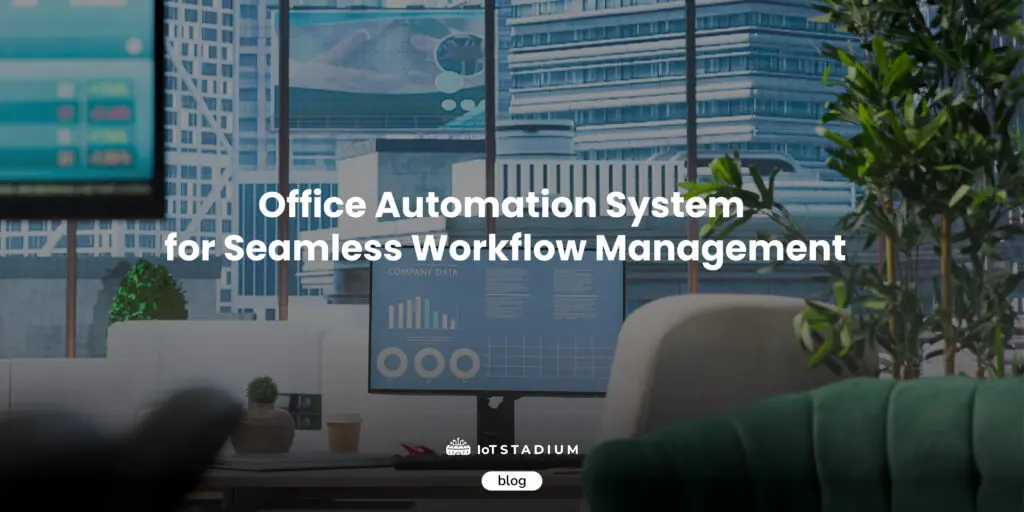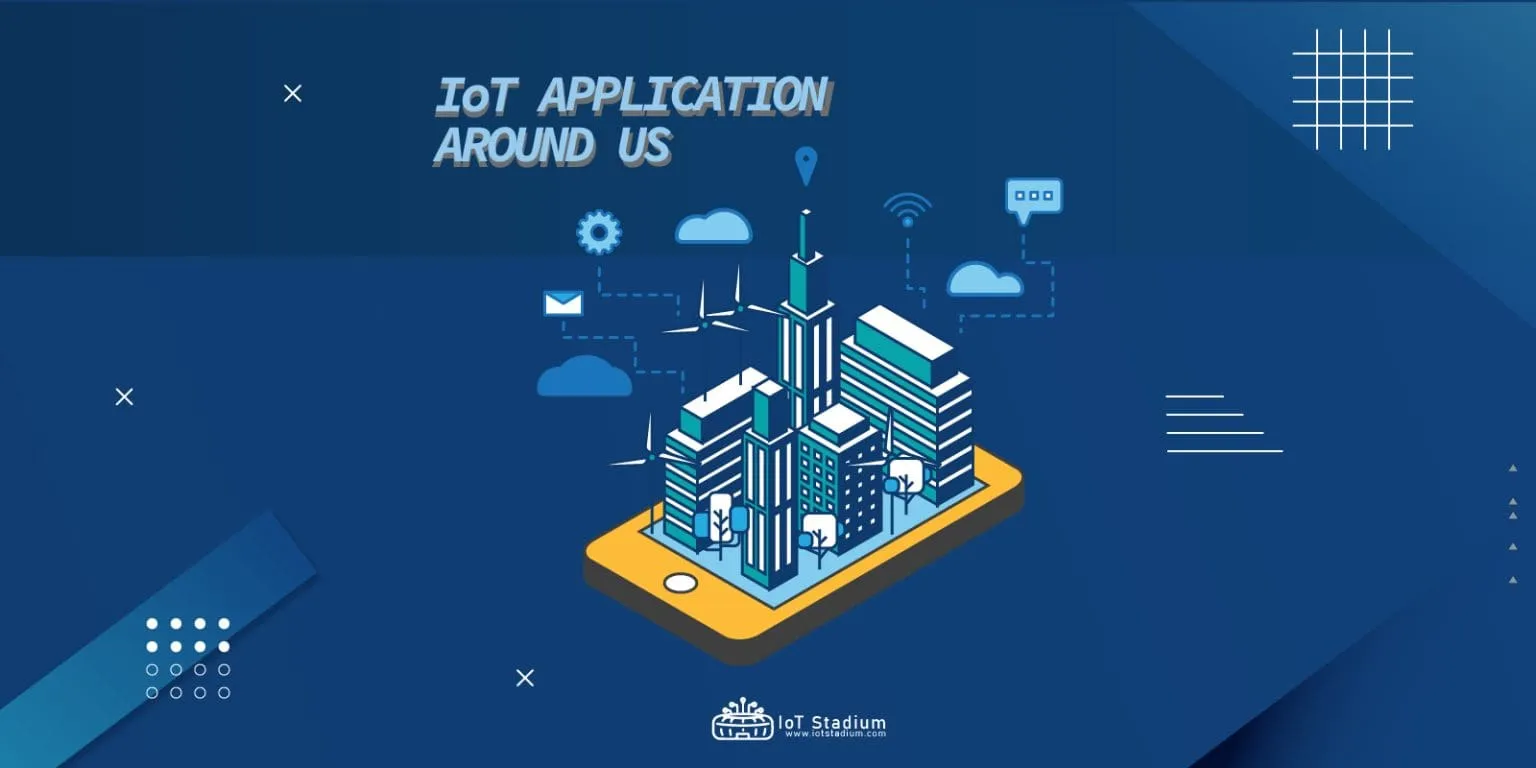A smart office that uses IoT technology has numerous IoT-connected gadgets that can be controlled remotely. These gadgets operate and gather information without requiring interaction with humans. Offices may be more productive than ever before with smart technology, which enables the automation of repetitive operations to free up staff members' time for important projects. Smart office technology can be utilized in a variety of ways.
What Is Office Automation?
Office automation refers to a system that allows electrical appliances and digital devices in the office—such as lights, printers, computers, air conditioning units, and microwaves—to be monitored and controlled remotely.
With so many devices in use, energy consumption becomes a significant concern. Leaving devices on unnecessarily leads to higher utility bills and wasted resources. Office automation helps address this by promoting energy conservation, reducing waste, and improving efficiency.
But it’s not just about saving energy. Automation can also handle mundane, repetitive tasks. For example:
- Setting meeting rooms to power on devices 15 minutes before a meeting begins.
- Triggering reminders 5 minutes before the meeting ends.
- Maintaining comfortable room temperatures automatically.
These simple automations reduce the need for manual intervention in everyday tasks, allowing teams to stay focused.
How Office Automation Systems Work
Office automation relies on a network of sensors and connected devices that gather environmental data. Here's how it works:
- Data Collection: Sensors detect motion, temperature, electric levels, etc.
- Data Transmission: The collected data is sent to a gateway, depending on the communication protocol used (e.g., BLE, Wi-Fi, LoRaWAN).
- Processing: The gateway sends data to a central server, where it’s processed in the application’s backend.
- User Interface: The processed data is displayed on a dashboard or app for monitoring and control.
For longer or scheduled automation tasks — like scheduled lighting, climate control — the process includes user-defined rules that trigger device actions automatically based on time, behavior, or conditions.

Key Benefits of Office Automation
Here are the main advantages of adopting office automation:
- Improved Accuracy
Automation reduces human error by standardizing repetitive tasks. - Better Decision-Making
Real-time data and analytics help managers make more informed choices. - Streamlined Business Processes
Tasks become more efficient and consistent across departments. - Cost Reduction
Lower energy consumption and fewer manual tasks mean reduced operational expenses. - Time & Resource Savings
Teams can focus on important work while routine processes run in the background. - Centralized Data Management
Easily access, store, and manage data in one integrated system.
Devices
Here are some devices which we give as our story:
Temperature Sensor
Monitors room temperature to maintain comfort and energy efficiency.
- Intelligent HVAC adjustments for occupant comfort.
- Energy savings by avoiding overcooling or overheating.
- Alerts when temperature thresholds are exceeded, ensuring equipment and people stay safe.
Motion Sensor
Detects movement in real-time and plays a critical role in:
- Triggering lights only when people are present.
- Activating or deactivating AC units based on occupancy.
- Enhancing security by alerting unauthorized activity after hours.
Electric Current Sensor
Measures power usage from connected devices or entire circuits. Benefits include:
- Real-time energy usage tracking and historical reporting.
- Identification of unusually high consumption areas.
- Prevention of overloads and support for predictive maintenance.
Lamps
Lighting fixtures that can be controlled individually or in groups through:
- Scheduled timers.
- Motion-based automation.
- Remote access from apps or dashboards.
- Dimming and color tuning for ambiance and energy optimization.
Air Cons
Air conditioning units integrated with automation can:
- Adjust temperatures automatically based on real-time room conditions.
- Operate on scheduled routines to match office hours.
- Turn off or enter idle mode when no one is present to avoid waste.
Other Devices
In addition to the core devices above, the system can be expanded with a variety of other components, depending on specific needs:
- Sensors
- Humidity
- Dust
- Light level sensor
- Door/window sensor
- Actuator
Devices that physically change a state in response to commands, such as
-
- Opening blinds
- Turning off water valves
Example of Automation in Office Settings
Meeting Room Automation
Meeting rooms are one of the most frequently used shared spaces in an office. With automation, these rooms can be prepared in advance without manual setup:
- Pre-Meeting Activation: Devices such as lights, ACs, and screens automatically turn on 15 minutes before a meeting starts based on the calendar schedule.
- End-of-Meeting Reset: The system detects the end of a meeting and resets the room—turning off lights, switching off AC, and clearing digital displays.
- Room Availability Monitoring: Motion sensors confirm if the room is actually in use. If not, the system can override the schedule and keep devices off to save energy.
This kind of automation enhances room utilization, reduces energy waste, and ensures the space is always ready for the next meeting.
Auto Reset After Booking Ends
After a scheduled activity finishes, the system resets devices to their default states automatically:
- Lights and AC turn off unless motion is detected.
- Digital signage or display screens reset to default branding or standby screens.
- Plug points and appliances deactivate to prevent unnecessary energy drain.
This feature is especially useful in busy office environments where people may forget to turn things off.
Working Hour Schedule Automation
This automation ensures that the entire office space operates efficiently during designated work hours:
- Startup Routine: Lights and HVAC systems activate automatically at the start of the workday.
- Shutdown Routine: All non-critical systems turn off after hours.
- Custom Schedules: Different zones or departments can follow unique schedules depending on work shifts or operational needs.
By aligning system behavior with business hours, organizations can significantly reduce unnecessary energy usage while ensuring comfort during active periods.
Smart Room Monitoring
Smart room monitoring enables continuous tracking of environmental conditions using sensors and automation rules. This system is highly customizable depending on the room's purpose and layout—whether the goal is to enhance comfort, reduce energy use, or protect occupants and assets.
For example, in a brick-walled room, poor ventilation may affect temperature and humidity levels. Smart monitoring can maintain ideal conditions by:
- Detecting changes in temperature or motion
- Automatically adjusting air conditioning
- Alerting users if anomalies are detected
This solution is not limited to office environments. It’s also ideal for:
- Classrooms
- Storage rooms
- Public facilities
- Meeting and conference rooms
By integrating key sensors—temperature, motion, and electric current—organizations gain actionable insights for automation and manual control. This leads to more efficient operations, reduced costs, and improved comfort.
Motion-Triggered Lighting
Motion-triggered lighting systems use motion sensors to detect occupancy in a room or area. When movement is detected, the lights turn on automatically. When no motion is detected for a specified period, the lights turn off or dim down gradually. This automation ensures that lighting is only used when needed, which leads to significant energy savings—especially in spaces like
- Meeting rooms.
- Hallways.
- Restrooms.
- Internal server storage.
- Storage areas that are not continuously occupied.
This feature is easy to deploy and scalable across all areas of an office, making it a simple yet powerful automation tool.
Energy-Saving Idle Mode
Energy-saving idle mode is an intelligent automation feature where electronic devices and appliances automatically reduce their energy consumption when they are not actively in use. This is particularly useful for devices like air conditioners, displays, plug loads, and other office electronics that may remain powered without purpose.
For example:
- Displays and projectors can switch to standby mode when no activity is detected for a set duration.
- AC systems can increase the setpoint temperature slightly when a room is unoccupied, reducing energy use while maintaining a comfortable baseline.
- Smart plugs can shut off power to non-essential appliances after office hours or when idle.
Idle mode ensures that the office runs efficiently behind the scenes, without compromising performance or comfort.
Office Automation with IoT
With IoT Stadium, we allow you to set these examples of automation and place the interface on your dashboard.
1. Meeting Room Automation
Create a seamless and professional meeting experience by automating your meeting room environment. With this setup, you can automatically power on lights, air conditioning, and presentation equipment 15 minutes before a scheduled meeting begins. As the meeting wraps up, the Auto Reset After Booking Ends feature kicks in—turning off all active devices, resetting the room to its default state, and preparing it for the next session.
You can follow this article if you want further reading: click here
2. Working Hour Schedule Automation
Optimize your office operations by automating devices based on your team's daily work schedule. With Working Hour Schedule Automation, you can set predefined rules to power on essential devices—such as lighting, ACs, or network hardware—just before the workday begins, and switch them off automatically after hours.
Or you can see the table down below, which we already implement it in our office.

3. Motion Triggered Lighting
Enhance energy efficiency and user convenience by deploying Motion-Triggered Lighting. Lights are automatically turned on when motion is detected in a room, hallway, or common area—and turn off after a set period of inactivity. This is especially useful in areas with irregular usage patterns such as meeting rooms, restrooms, or break areas.
When combined with the Auto Reset After Booking Ends feature, this automation becomes even smarter—ensuring that lighting usage is reset along with other environmental settings once a booked session concludes. This dual-layer automation not only helps save energy but also creates a smarter, more responsive office environment.

Conclusion
In the end of the day, the application of Internet of Things (IoT) in office settings might helped employer and the employee to monitor and control their workplace remotely. Several automations also can be made by combining certain and actuators like: Meeting room automation, auto reset after booking ends, smart room monitoring, motion-triggered lighting, energy-saving idle mode.
While doing so, they can get improved accuracy, since sutomation reduces human error by standardizing repetitive tasks. Better decision-making because real-time data and analytics help managers make more informed choices. Streamlined business processes since tasks become more efficient and consistent across departments. Cost reduction, with lowering energy consumption and fewer manual tasks mean reduced operational expenses. Time & resource savings, means teams can focus on important work while routine processes run in the background. Centralized data management, since they can easily access, store, and manage data in one integrated system.
To top it all, IoT Stadium is able to fulfill those function, you just simply add your devices and gateways, then let it connect with IoT Stadium, so you can monitor and control from anywhere and anytime.
Visit our blog for more information about technology. Alternatively, visit our knowledge base page for tutorials on using the features in IoT Stadium.


